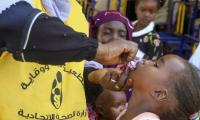LAHORE: The Institute for Policy Reforms (IPR) urged the government to make a concrete decision on the future of Pakistan International Airlines (PIA), “rather than dwelling on the binary of ‘to sell or not’”.
The IPR, in its report, said If PIA remains in the public sector the government must bring reforms in the airline.
“It must set targets for the top management and hold them to account. It must also give the management full autonomy in decision-making,” it said.
As of September 2015, PIA had negative equity of Rs167 billion and long-term debt of Rs109 billion or more. Its current assets of Rs24 billion are a mere 12 percent of the current liabilities of Rs197 billion, payable within twelve months. Furthermore, for years, the airline has generated negative cash flows.
Payroll cost, which seems to be at the centre of recent discussions, is 19 percent of the total cost (17 percent, if finance cost is included). The equivalent number for Emirates, another public sector airline is 14.3 percent.
The airline’s average number of employees was 16,243 in 2014, the report said, citing the company’s annual report. Consequently, each employee contributed Rs6.1 million to revenue.
PIA’s available capacity per employee is 147,502 tons kilometre. The corresponding numbers for Emirates are Rs55 million per employee revenue, and 1.1 million tons km.
“PIA does not do well in the critical indicator of capacity utilisation. Its passenger seat factor is an acceptable 72 percent but overall capacity utilisation is a sub-par 59 percent. Corresponding numbers for Emirates are 80 percent and 67 percent with a breakeven point of 64 percent,” it said. “To hold PIA’s workforce responsible for its weak performance is misplaced. The key to PIA’s woes is that it is not run as a business.”
The IPR said government plays a major role in many operational decisions. Too many non-commercial considerations become PIA’s responsibility. “Government also appoints senior management, and often intervenes in appointment of operation and support staff, sometimes beyond actual needs. Government also sets the policy framework in which the PIA operates. The most obvious example of this is the open sky policy,” it said. “PIA needs reforms and a new business model. It is for the government to decide whether reforms required in PIA are best achieved by keeping it in the public sector or by finding a strategic partner.”
The fact sheet said even a strategic investor for 26 percent equity would expect the government to clean the balance sheet and assume PIA’s over Rs190 billion long and short-term debt. “As the majority owner, government must bear this liability whether PIA remains in the public sector or not,” it said.
It said there is yet no indication of the value of PIA, “so it is difficult to say if 26 percent new equity will be enough to upgrade equipment and enable the airline to compete on quality and safety.”
“The airline’s landing rights at most major world airports are of considerable value. If presently these are not fully utilised, there is considerable potential for revenue increase here,” it said.
Honda officials posing for a photgraph. —APP/FileKARACHI: Honda Atlas Cars Pakistan Ltd has achieved a major...
SOS children village's children showing bags donated by Emirates International Airlines. — Emirates...
Automobiles at the shipping terminal are shown from the view of a drone in San Diego, California, US, March 26, 2025....
Key challenge lies in whether the ruling elite is willing to implement changes that could weaken their grip on power
A woman holds a smartphone displaying the logo of social network X . — AFP/FileElon Musk said his xAI artificial...
A representational image of a person using his cellphone for a digital transaction. — Unsplash/FileKARACHI: Chief...







